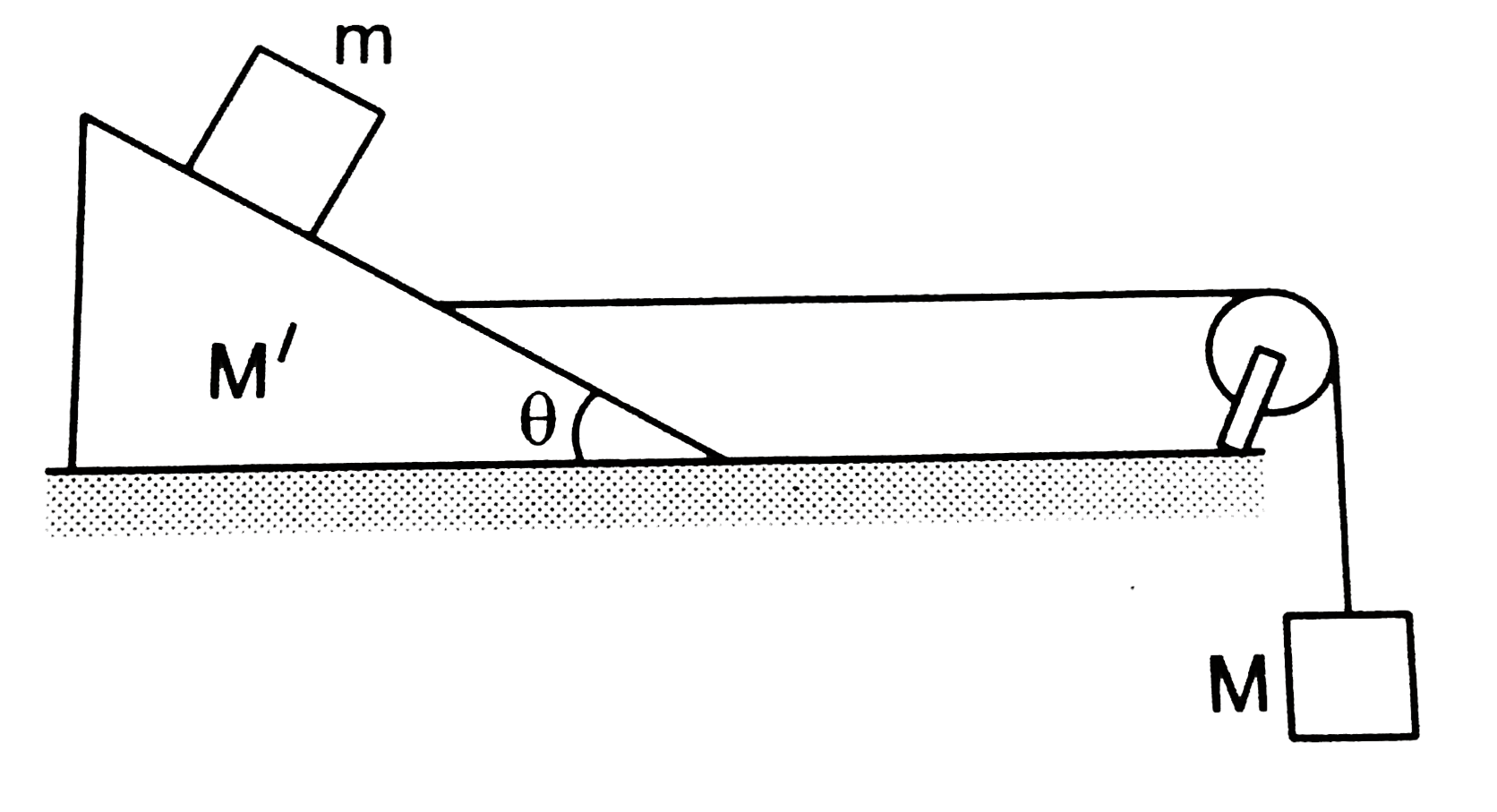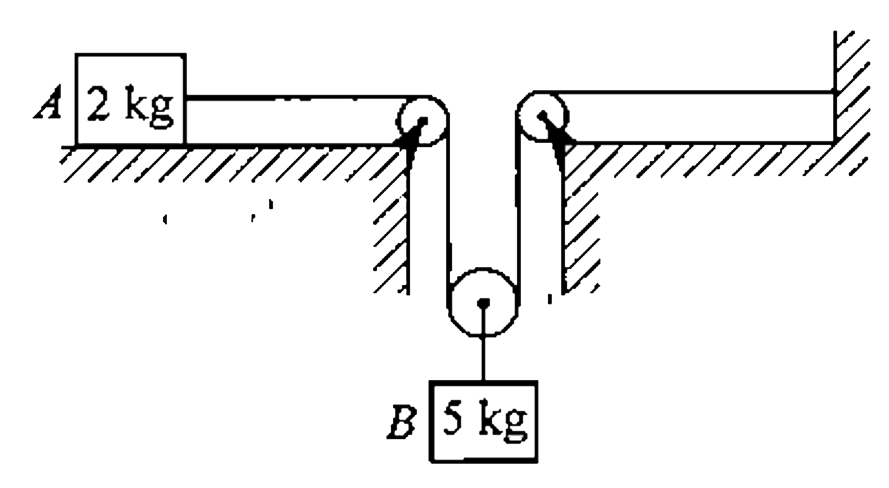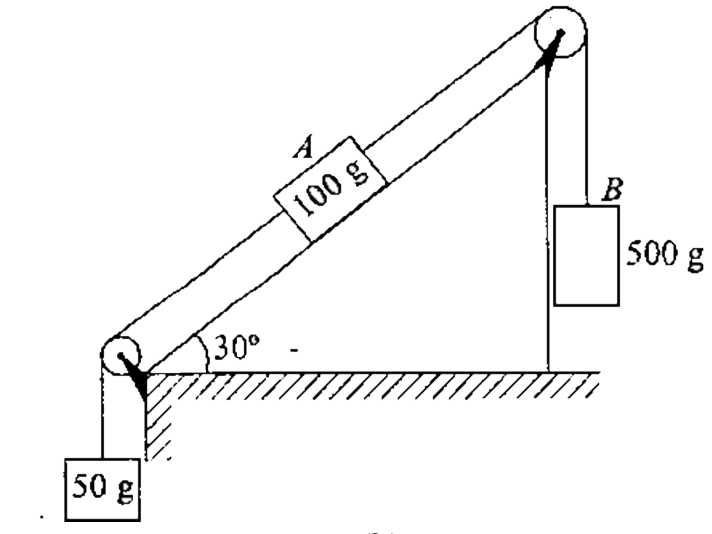The acceleration of the block A and B are

g/7 downward, 2g/7 upward
2g/7 downward, g/7 upward
3g/7 downward, g/7upward
4g/7 downward, 2g/7 upward
The correct Answer is:B

5g-2T=5a (i)
T-4g=4x2a=8a (ii)
−3g=21a⇒a=−g7
i.e. the assumed direction is wrong.
Acceleration of 5 kg: g7 upward
Acceleration of 4 kg: 2g7 downward
Topper's Solved these Questions
Similar Questions
Knowledge Check
The acceleration of the block is
 A6m/s2B8m/s2C10m/s2D12m/s2
A6m/s2B8m/s2C10m/s2D12m/s2The acceleration of the block A is
 A2g/3 upwardBg/3 upwardC2g/3 downwardDg/3 downward
A2g/3 upwardBg/3 upwardC2g/3 downwardDg/3 downwardThe acceleration of the block (A) and (B) respectively in situation shown in the figure is: (pulleys and string are massless).
 A2g7 downward, g7 upwardB2g3 downward, g3 upwardC1013g downward, 5g13 upwardDnone of these
A2g7 downward, g7 upwardB2g3 downward, g3 upwardC1013g downward, 5g13 upwardDnone of these
A block of mass M is pulled along a horizontal frictionless surface by a rope of mass m . A force P is applied to the other end of the rope . (a) Find the acceleration of the block and the rope . (b) Find the force that the rope exerts on the block M in terms of P, M and m .
View SolutionCalculate the acceleration of block A and B in cases (a),(b), and (c ).



View SolutionIn an arrangement shown in the figure, the acceleration of block A and B are given-

View SolutionA block A of mass 2kg is placed over smooth block B of mass 4kg which is placed over a smooth horizontal floor The coefficient of friction between A and B is 0.4 when a horizontal forces of magnitude 10N is applied on A the acceleration of block of A and B are

View SolutionA long block A of mass M is at rest on a smooth horizontal surface.A small block B of mass M/2 is placed on A at one end and projected along A with some veklocity v.The coefficient of friction between the block is μ then , the accelerations of blocks A and B before reaching a common velocity will be respectively

View Solution



